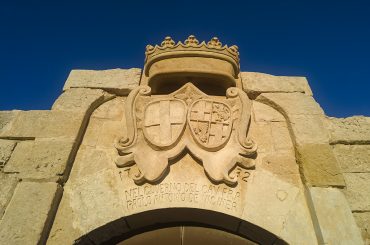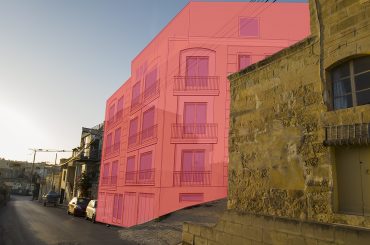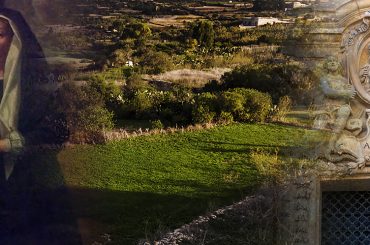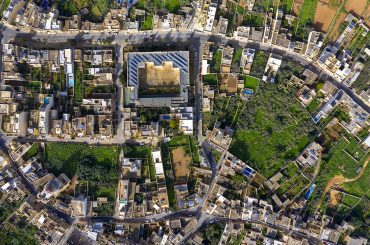As the Gozo land grab investigation has spun closer to the church and archbishop in recent months, a slur has been spreading in some private messages that I may have an agenda against the church, or that I may be misguided.
I suppose that these rumours are rooted in the church’s statements because the people making them tend to use the same arguments being peddled by the church.
At one point the church’s spin was that it “never owned the land” (of course it does not, no one owns the land, the land was put in the medieval foundation). But in its latest statement – published preemptively before a press conference by Moviment Graffitti and residents outside the Curia a month ago – the church started by saying that it “could not have foreseen, let alone exercise control over, a decision in 2019 by the Land Registration Agency to permit the registration of tracts of land in Gozo which caused residents uncertainty over legal title to their homes.”
It then suggested that the Land Registry is “the real reason behind residents’ uncertainty over legal title to their homes.”
The Land Registry is not blameless – some registrations were approved on basis of deeds that did not even mention the area registered. But this does not absolve what occurred before – when the archbishop renounced the power of veto he had over the transfers of land placed in the foundation – which is when it all started.
Besides, the registration of land on which houses sit is only one facet of people's indignation. Another is the hundreds of flats that are being built, or set to be build, in eastern Gozo on these lands.
The church’s statement then brands media coverage on the Gozo land grab as a “misinterpretation” and goes on to say that a “clarification is, therefore, regrettably, imperative to contain the spread of misinformation.”
After making this snide against the “media”, the statement then goes into a “brief chronology of the facts”.

Chronology of facts or false narrative?
The statement says that the foundress, Cosmana, “determined that the foundation’s administrator would be a layperson or cleric presented by her heirs, as patrons, and approved by the bishop.” This explanation does not mention that Cosmana specified that the rector had to be descended from the family or a priest – the rector appointed by Archbishop Charles Scicluna fell in neither category.
The statement also says that Cosmana “did not have any children”. Yet the late priest and scholar Gwann Azzopardi has written that Cosmana had a son, Injazju, a Jesuit who died in young adulthood. And although this has no relevance – Cosmana set up the foundation for all time to raise funds for pious deeds, and put her descendants as patrons (not owners) – this point illustrates the pattern of falsities that is used to build the church’s narrative.
Perhaps whoever wrote the church’s unsigned statement had in mind some kind of connection between the childless Cosmana and the eventual appearance of a man from Sliema, Richard Stagno Navarra, who in 1991 claimed without providing any independently-verified evidence to be descended from Cosmana after he was contacted by a Gozitan property dealer.
Richard proceeded to transfer foundation land to the Gozitan. Then, when the archbishop of the time rejected his application for rector, he applied to a court in Gozo to be made rector. The court, presided by magistrate Carol Peralta, granted the request the next morning. The church challenged the appointment, and final judgement was delivered by the Court of Appeal in 2013.
The church statement then asserts: “The courts established that the foundation was a lay entity and that any property belonging to it was not ecclesiastical, stating that the Archbishop only had the right to appoint an administrator. At no point did they cast doubt on Richard Stagno Navarra’s status as a legitimate heir.”
This is a misrepresentation of the 2013 judgement. In that judgement, the Court of Appeal nullified Richard Stagno Navarra’s appointment, and then pointed out that there was no need for a further judicial declaration on whether Stagno Navarra could be rector. The judgement reads: “The Archbishop did not approve the appointment [for rectorhood] of the defendant[Richard Stagno Navarra]. This [rejection of Richard’s bid for rectorhood] was within his [the archbishop’s] power to do, and there is no need for a judicial declaration that says that the decision was good to remain in force.”


In other words, Richard’s appointment was nullified, the church won the case and regained the upper hand. At no point did the court had to pronounce itself on whether Richard was “legitimate heir” or not. That was not the question before the court.
The next paragraph in the church’s statement says that “the Archbishop deemed that ploughing on with the legal battle was costly and most likely futile, and in 2017 acceded to signing an agreement in which the Church formally acknowledged court decisions recognising the heirs.”
Now we have a double misrepresentation. First, there was no legal battle to 'plough on with' because the church had won an all-expenses-paid battle in the final court, the Court of Appeal. Second, the final court nullified Richard’s appointment and did not go into the question of whether he was heir or not, much less “recognize” him or anyone else as heir.
Then the statement said that the archbishop “consented to Dr Valentino’s nomination [for rectorhood] since he did not want to have a cleric involved in the administration of property belonging to a lay organisation.”
Yet irrespective of whether the foundation is a lay or ecclesiastical entity (a question that has not been settled in court), the foundress laid specific rules on who could be appointed rector at the archbishop’s pleasure. He had to be a descendent or priest – the lawyer Patrick Valentino is neither.

Peril to journalism
The peril of the church’s spin or lies is that it sets up investigative journalists like myself as figures of contempt among those who believe the church. Some of those people are now saying that I have an agenda against the church.
Do I have any agenda?
In the year that has just ended, I have earned less than the minimum wage. I could be doing something less risky and less stressful, and earning more.
So what is my agenda then?
When I stood outside the Curia a month ago – after the church had already issued a preemptive statement before the residents had even assembled outside the Curia – I saw some people sobbing with anguish.
It was not the first time I saw people crying. I have interviewed many of the affected people. Some of them have gotten sick with worry; for others it has become an all-consuming preoccupation.
And I also saw people cry with something like relief at the publication of some articles. The articles, particularly those published by myself and Matthew Vella of Malta Today, have been to these people a flicker of light in a place of darkness.
Now that would be a worthy agenda: to have journalistic revelations serve to give hope and information.





